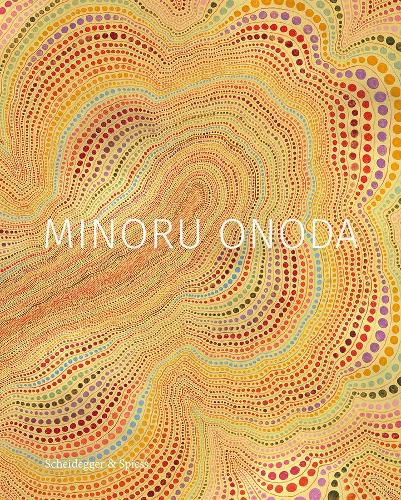Readings Newsletter
Become a Readings Member to make your shopping experience even easier.
Sign in or sign up for free!
You’re not far away from qualifying for FREE standard shipping within Australia
You’ve qualified for FREE standard shipping within Australia
The cart is loading…






Minoru Onoda was born in Japanese-occupied Manchuria to a Japanese family in 1937. Before the outbreak of World War II, they moved to Himeji in Japan, which remained the artist’s residence until his passing in 2008. Following his artistic education at the Osaka Institute of Fine Arts and at Osaka School of Art in the 1960s, Onoda joined the Gutai, Japan’s first post-war radical artistic movement. Gutai challenged what the movement considered a reactionary understanding to initiate new notions of art, and redefined the relationships among body, matter, time, and space. Enchanted by concepts of repetition, Onoda produced panels with amalgamations of gradually increasing dots with relief, creating organically growing shapes, progressing to infinite circles and ultimately moving to a monochrome style in painting. When Gutai disbanded in 1972, he opted for a conceptual style in which the proliferating dots disappeared. The Western world has received Minoru Onoda’s art almost exclusively in the Gutai context, for example in the 2013 exhibition Gutai: Splendid Playground at New York’s Guggenheim Museum. This overdue first-ever monograph on Minoru Onoda introduces him as an artist in his own right. Apart from investigating his relations with Gutai, it explores his creative process with a particular focus on his sketchbooks.
AUTHORS: Edward M. Gomez is a scholar of art history critic, curator and graphic designer. He also works as chief editor of British art magazine Raw Vision.
Astrid Handa-Gagnard is a scholar of art histoy and curator and director of FRAC Bourgogne in Dijon, France.
Shoichi Hirai is a Professor of Art History at Osaka’s Kansai University. Koichi Kawasaki is Professor of Art History at Konan Women’s University in Kobe.
170 colour illustrations
$9.00 standard shipping within Australia
FREE standard shipping within Australia for orders over $100.00
Express & International shipping calculated at checkout
Minoru Onoda was born in Japanese-occupied Manchuria to a Japanese family in 1937. Before the outbreak of World War II, they moved to Himeji in Japan, which remained the artist’s residence until his passing in 2008. Following his artistic education at the Osaka Institute of Fine Arts and at Osaka School of Art in the 1960s, Onoda joined the Gutai, Japan’s first post-war radical artistic movement. Gutai challenged what the movement considered a reactionary understanding to initiate new notions of art, and redefined the relationships among body, matter, time, and space. Enchanted by concepts of repetition, Onoda produced panels with amalgamations of gradually increasing dots with relief, creating organically growing shapes, progressing to infinite circles and ultimately moving to a monochrome style in painting. When Gutai disbanded in 1972, he opted for a conceptual style in which the proliferating dots disappeared. The Western world has received Minoru Onoda’s art almost exclusively in the Gutai context, for example in the 2013 exhibition Gutai: Splendid Playground at New York’s Guggenheim Museum. This overdue first-ever monograph on Minoru Onoda introduces him as an artist in his own right. Apart from investigating his relations with Gutai, it explores his creative process with a particular focus on his sketchbooks.
AUTHORS: Edward M. Gomez is a scholar of art history critic, curator and graphic designer. He also works as chief editor of British art magazine Raw Vision.
Astrid Handa-Gagnard is a scholar of art histoy and curator and director of FRAC Bourgogne in Dijon, France.
Shoichi Hirai is a Professor of Art History at Osaka’s Kansai University. Koichi Kawasaki is Professor of Art History at Konan Women’s University in Kobe.
170 colour illustrations